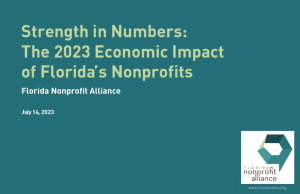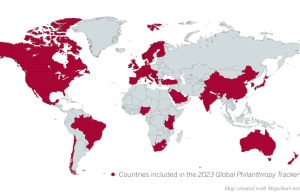3 things to watch in nonprofit revenue
Recent years have seen a tremendous amount of change in the world of nonprofit finances: A new tax law with myriad impacts on nonprofits; growth in new giving vehicles and gift-types; and, an increasing flow of politically-minded funding.
As I think of what’s in store for 2020, the theme that resonates is past is prologue. The three main things to watch in the coming year as being closely tied to broader trends and changes that have been evolving in recent years and might now come to a head in 2020.
The Full Effect of the Tax Law
The Tax Cuts and Jobs Act (TCJA) went into place in 2018 with substantial fanfare. Why is it a key source of uncertainty for nonprofit finances two years later? The reason it’s on the radar is twofold. First, 2020 is when we might fully learn the initial shocks brought by the changes to the tax code.
To be sure, we already know that giving declined in 2018, but it’s really hard to separate that drop from the decline of equities in the second half of 2018. It’s also likely that many donors didn’t fully realize the implications of the higher standard deduction and reduction in itemized deductions on the tax advantages of giving until completed their returns in 2019. As a result, 2019 is when this truly came to fruition, and the early returns don’t look good.
The biggest impact — on tax-motived year-end giving — won’t be learned until 2020.
The second reason 2020 is shaping up to be a year when the TCJA hits nonprofits is that the initial shock is now giving way to a new normal, one that might favor other forms of giving. When people give, the social norm is that this giving is to charities, and this norm has been codified by tax incentives.

New…
• Rules
• Ways
• Whys
Now that such incentives are muted, how much will giving norms change to favor donations to social welfare groups or other even more politically-inclined groups? Or, will givers further embrace alternative means to support individuals directly like GoFundMe and related vehicles? The answer to this should come into focus in 2020.
Constraints on Donor-Advised Funds
Donor-Advised Funds (DAFs) continue their growth and influence, seemingly unabated. Every year seems to suggest a tipping point, but it’s worth watching to see if 2020 finally brings regulatory scrutiny. There are two developments which suggest this year could be different.
First, in lieu of federal action, states have have begun looking at whether additional requirements should be placed on DAFs to ensure they’re operating consistent with the spirit of the public charity category. Such state action might compel broader changes.
A second development is the potential window into the inner workings of commercial donor-advised funds that the Fairbairn v. Fidelity Charitable case might bring. How involved are financial advisors in the process and how are they compensated for directing funds toward DAFs? What implicit promises do commercial DAF sponsors provide to donors that helped fuel their growth? How are DAF funds invested and who receives fees for them?
These questions and more are largely out of the view of the public due to the nature of the relationships between the DAF sponsors and their commercial affiliates. But this lawsuit could bring them to the forefront which may turn out to bring oversight in play.
Giving Around the 2020 Election
Not only were charities affiliated with politicians at the forefront of much of the election discussions in 2016, but the results of the election notably shifted giving to particular causes. Expect a turbo-charged repeat in 2020. How much will the salience of political rancor spur issues-motivated giving?
One should expect a boost for organizations focused on immigration, health care, civil rights, and environmental protection as these issues invade the public sphere.
In the build-up to the election, expect also for the spending and income sources for charities affiliated with prominent candidates to be scrutinized. The days of a politician touting their charitable endeavors as a positive without skepticism are over. David Fahrenthold’s examination of the Donald J. Trump Foundation in 2016 has forever changed the view of politicians and their charities. That, and the availability of public information about charities, makes politician- associated charities a target ripe for opposition.
And, this is just the build-up to the election. The next question is how will the outcome of the election affect charities? Will there be more “rage giving?” Will fears of a wealth tax prompt giving to shield from taxation risk? Or, will the equity markets’ reactions to the election outcome largely drive the year-end giving environment? There are many unknowns, but what is known is that the election outcome will influence the flow of funds to charities, both in aggregate and in reshuffling giving priorities.
We are in the middle of a period of uncertainty and volatility in nonprofit finances. All signs point to continued uncertainty in 2020. While these three things to watch might resolve some uncertainties, it’s even more likely they will create more of them.
What this means is that a sector once viewed as staid and predictable is now at the center of a storm and organizations are learning to live with continued uncertainty and push their missions ahead amidst the choppy waters.
Brian Mittendorf is senior associate dean for staff, human resources, and culture and Fisher Designated Professor of Accounting at The Ohio State University Fisher College of Business in Columbus, Ohio. His email is [email protected]











